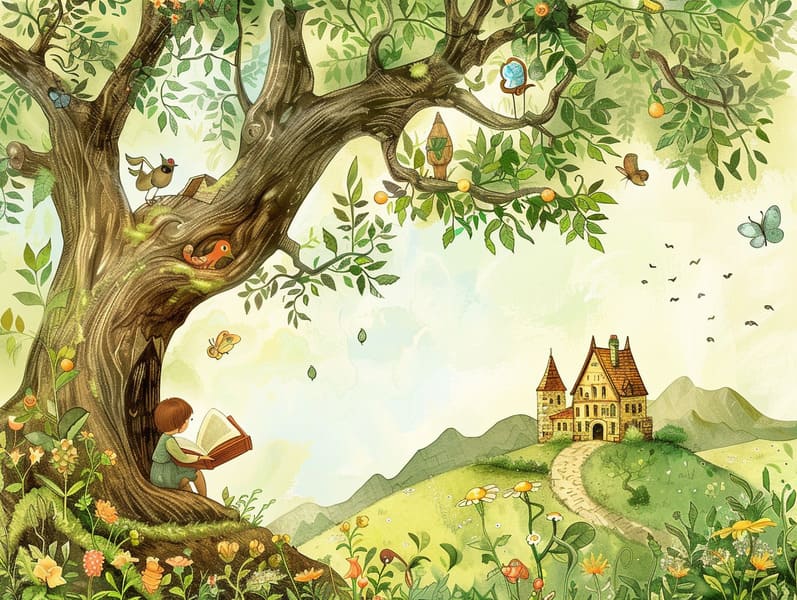A Brief History of Vintage Fairy Tales with Their Endless Enchantment.
A Brief History of Vintage Fairy Tales with Their Endless Enchantment.
Blog Article

Timeless fairy tales have long histories. These stories have been whispered from one generation to the next well before they were ever published. They arose from a variety of traditions, including European traditions. They were initially passed along among grown-ups, often carrying themes and messages concerning the societal norms and beliefs of the time.
Jacob and Wilhelm Grimm, Jacob and Wilhelm Grimm, were among the first to gather and publish many of these beloved fairy tales. Their published works, "Grimm's Folk Tales," included tales like "Cinderella," "Hansel and Grethel," and "Little Snow White," which have since become staples in the world of children's fairy tales. Similarly, the Danish author's magical stories, such as "The Mermaid's Tale," and "The Duckling that Could," have captivated hearts worldwide, establishing their place in the pantheon of timeless fairy tales.
Even though they are old, classic fairy tales remain as meaningful as ever, especially as nighttime stories for kids. These charming stories are now available in numerous formats, including vibrantly illustrated books, fantastical animations, and internet fairy tales.
Their unwavering allure can be attributed to several charming aspects:
Significant Morals: Timeless fairy tales often share important moral lessons. Narratives like "The Shepherd Boy and the Wolf" teach the significance of being truthful, while "The Race of the Tortoise and the Hare" stress the qualities of determination and humbleness. These tales offer children clear distinctions between correct and incorrect, helping to shape their moral compass in a tender yet impactful way.
Compassion and Insight: Timeless fairy tales frequently portray figures facing trials and tribulations, urging listeners to empathize with their struggles and cheer for their triumphs. For instance, "Beauty and Her Beast" illustrates the benefit of looking deeper to recognize the real person of a person, strengthening awareness and discernment.
Cultural Perception: Many old fairy tales are steeped in the cultural contexts from which they originated. Understanding these stories can provide informative snapshots into different historical contexts, building a sense of world appreciation and comprehension.
Fantasy and Imagination: The fanciful elements in classic fairy tales—talking animals—activate children’s creativity. These stories take readers to imaginary realms, enhancing fantasy ideas and a sense of amazement that persists a lifetime.
Timeless fairy tales are not only charming but also instructive. They serve as bewitching tools in developing various cognitive and emotional skills in kids. When fairy tales are narrated, they foster language development by bringing new lexicon and intricate sentence structures. This practice also strengthens auditory skills and mental focus, as the young focus on every detail, keen to see what happens next.
Furthermore, discussing the themes and characters of classic fairy tales can promote cognitive skills and cognitive skills. Kids are guided to find patterns, foresee events, and grasp cause and effect. These reflections also boost the young communicate their thoughts and feelings, boosting their emotional intelligence.
In today’s technological age, the presence of online fairy tales has made these narratives more attainable than ever. Web platforms and software give ample collections of timeless fairy tales that can be viewed or listened through anytime, anywhere. Fairy tales voiced are particularly favored, offering an immersive method for young readers to engage with these entrancing tales. Audiobooks and read-to-me videos transport characters and settings to life, often complemented by spellbinding harmonies and background music that elevate the narrative journey.
The enduring charm of timeless fairy tales lies in their ability to adjust to present days while retaining their core values. Contemporary updates of these fairy tales often include more different protagonists and modern settings, making them understandable to today’s audience. However, the basic principles of boldness, kindness, and righteousness remain unchanged, continuing to appeal to young listeners of all ages.
Timeless fairy tales also offer a sense of reassurance and familiarity. They bring a orderly narrative with a unmistakable beginning, middle, and end, often more info finishing with the settlement of conflicts and the triumph of right over wrong. This predictability can be encouraging for the young, extending a sense of assuredness in an constantly changing world.
Classic fairy tales continue to delight and teach new generations, maintaining their elegance and meaningfulness in modern society. As kids' bedtime tales, they disclose a perfect blend of charm and enlightenment, enriching moral values, empathy, and creativity. The proliferation of internet fairy tales and the prevalence of fairy tales spoken affirm that these ancient fairy tales remain reachable to new generations.
By keeping and recounting these fairy tales, we continue to treasure the rich tapestry of fables and cultural heritage. Whether you are experiencing a richly illustrated book, discovering a internet collection, or listening through an spoken story, the majesty of popular fairy tales is always within reach. These fairy tales highlight of the enduring presence of tales and its ability to bond us across epochs and places.
Regardless if you are accessing a artistically illustrated book, enjoying a online library, or listening via an narrated book, the fascination of old fairy tales is always within reach.
These stories point out of the timeless nature of stories and its ability to bring us together across generations and cultures, forming a connection that captivates and teaches alike.